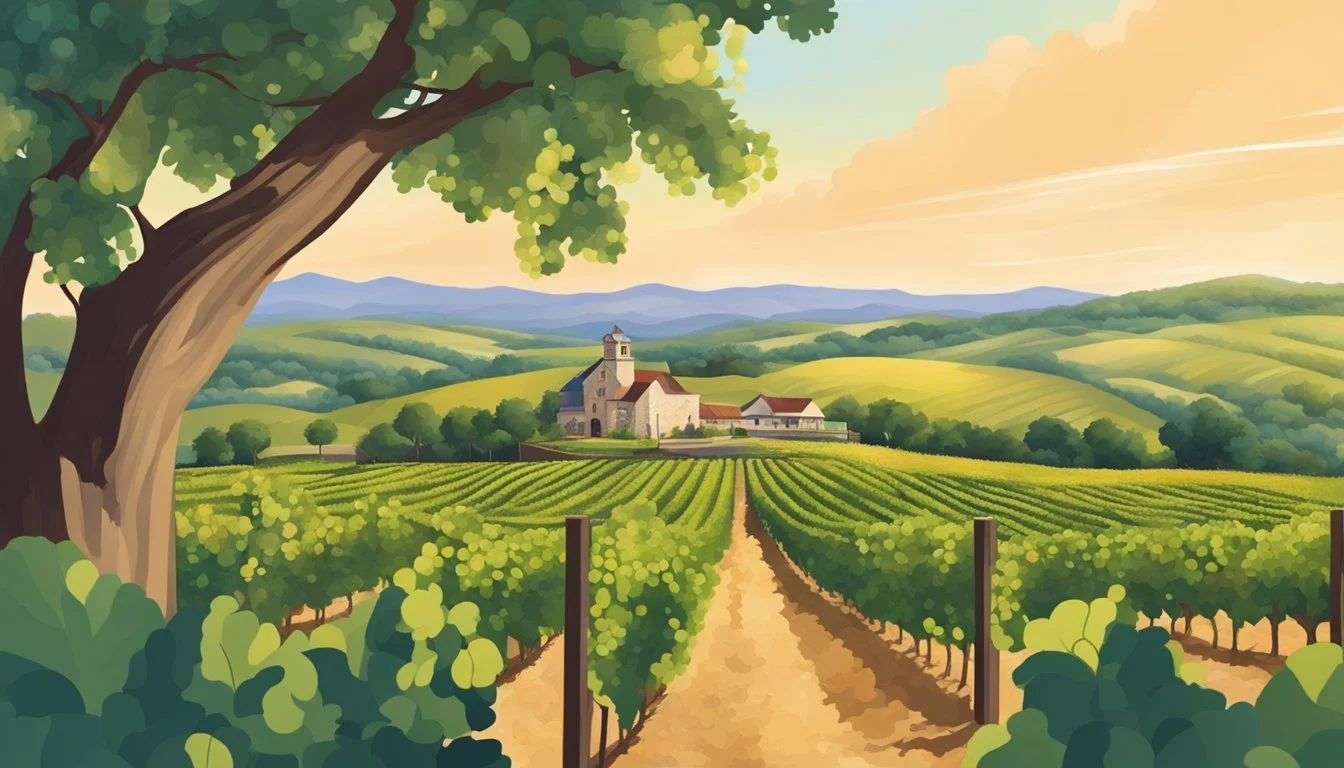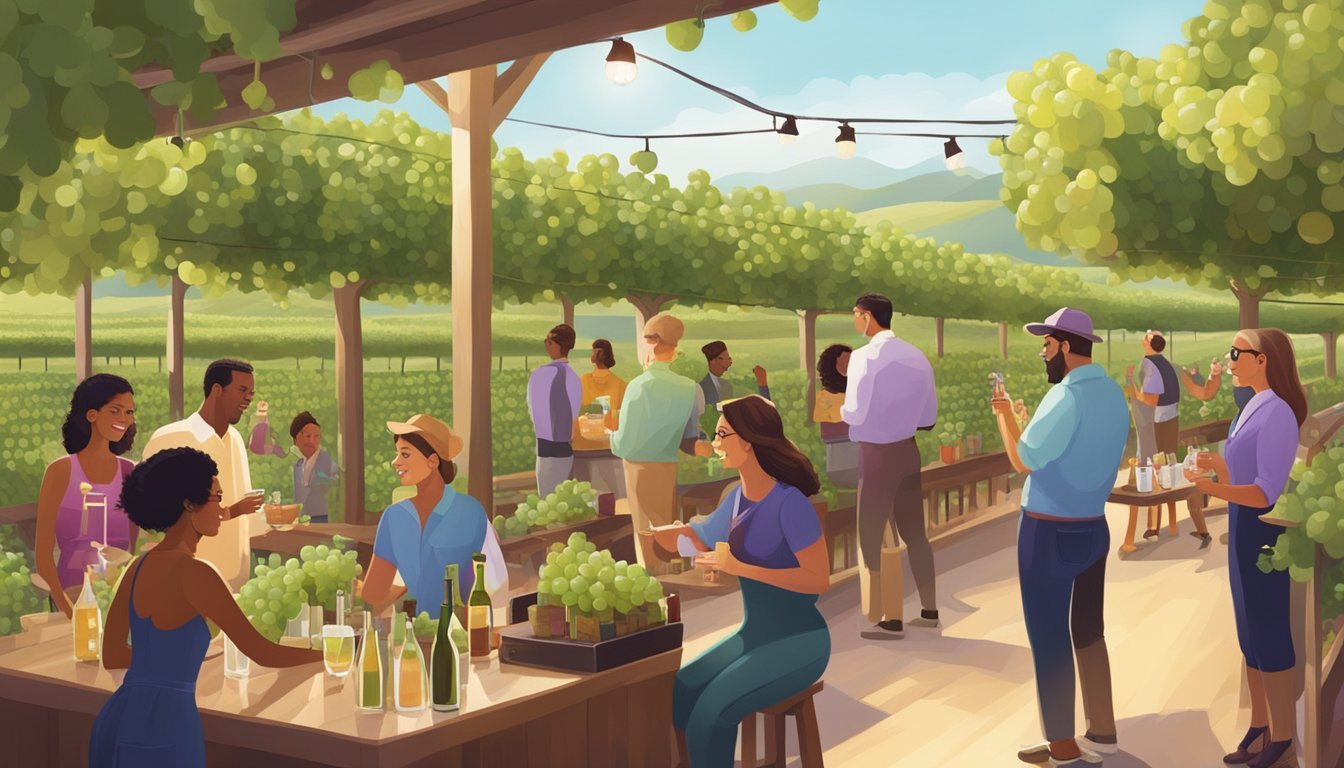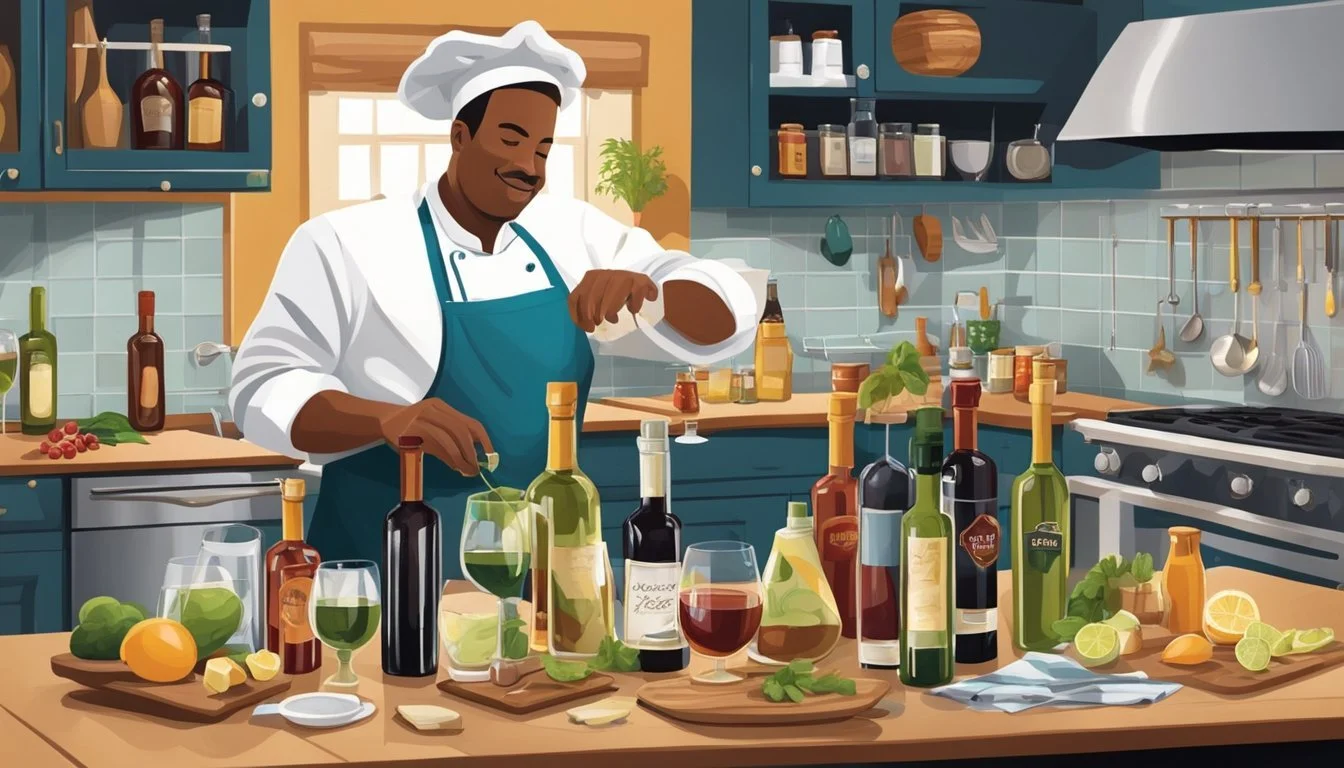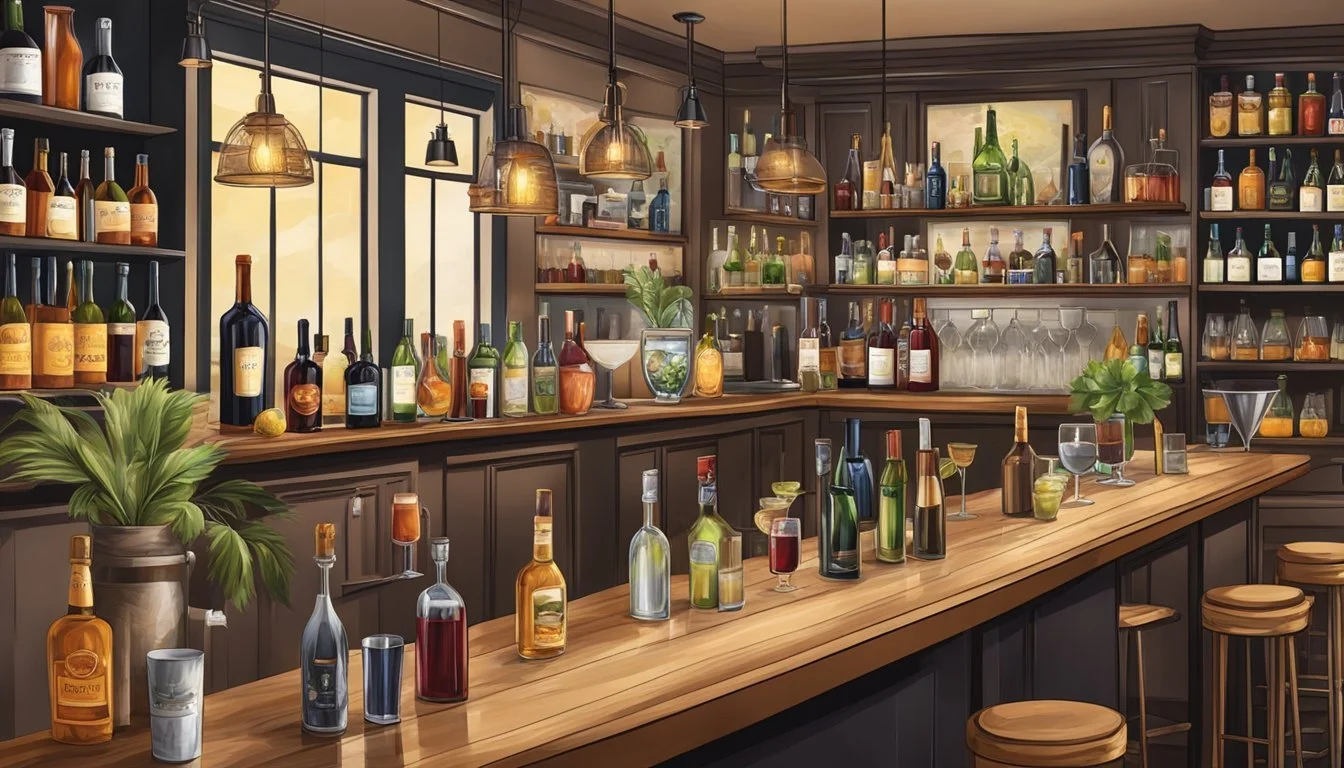Exploring the Texas Wine Cocktail Trend
A Guide to the Latest Craze
As wine culture evolves, Texas emerges as a pioneer in the latest trend of wine cocktails. This trend is a confluence of traditional winemaking with the innovative world of mixology, where Texas wines are being transformed into sophisticated, flavorful cocktail offerings. Texas wineries are responding to consumer demand by exploring this fusion, giving rise to a new social experience that marries the craft of winemaking with the creativity of cocktail artistry.
The Texas wine cocktail trend reflects a larger movement towards versatility and inclusivity in beverage options. With an eye on the health-conscious consumer, Texas mixologists and winemakers are collaborating to craft low-alcohol and non-alcoholic wine cocktails. These beverages cater to a broad audience, looking to enjoy the social aspects of a wine experience, with a mindful approach to alcohol consumption.
Wine cocktails in Texas are not just a passing fad but a testament to the Lone Star State's commitment to innovation in the wine industry. By incorporating local flavors and ingredients, each cocktail tells a story of its origin, allowing enthusiasts to explore a unique sensory landscape. This growing trend reflects Texas's bold spirit and is set to define the beverage scene, both within the state and beyond.
The Evolution of Texas Wine
The Texas wine industry's transformation from its humble beginnings with Spanish missionaries to its modern growth reflects both historical resilience and contemporary innovation. The following exploration touches upon pivotal historical eras and the recent advancement of the wine industry in Texas.
History of Viticulture in Texas
The roots of Texan viticulture extend back to the 1600s, when Spanish missionaries planted the state's first vineyards to produce wine for religious purposes. These initial vineyards laid the cornerstone for the region's wine-producing potential, creating a longstanding tradition. Val Verde Winery, established in 1883, stands as a testament to the early established wine culture in Texas and is the oldest bonded winery in the state still in operation.
Prohibition and its Aftermath
The imposition of Prohibition in the early 20th century devastated the budding Texas wine industry. Legal production ground to a halt, and what had been a promising growth was significantly stunted. After the repeal in 1933, the industry struggled to recover. For decades, Texas wine production languished, and it wasn't until the 1970s that a dedicated resurgence began to take shape, breathing new life into Texas viticulture.
Modern Resurgence of the Texas Wine Industry
In the latter part of the 20th century, the Texas wine industry embarked on a profound journey of revival. Modern wineries such as Llano Estacado, founded in 1976, have played a pivotal role in showcasing the capability of the region to produce quality wines. Texas now proudly ranks as the fifth-largest wine-producing state in the US, with an industry valued at over $13 billion and nearly 900 wineries contributing to the economy. Wine producers have been expanding their portfolios, including non-alcoholic and low-alcohol wine options, to appeal to a wider audience of health-conscious consumers.
These subsections outline the transformative epochs of the Texas wine industry, revealing both its storied past and dynamic future.
Understanding Texas Terroir
The character and quality of Texas wines are profoundly influenced by the state's terroir, which involves the complex interplay between climate, soil, and varietals that define each wine's unique profile.
Geography and Climate
Texas terroir is largely defined by its diverse geography and climate, with each wine region presenting distinct conditions for viticulture. The state's wine regions vary from the Hill Country with its rolling hills to the High Plains AVA, which is characterized by its high elevation and arid climate. Texas is home to a range of climates, from continental in the north to coastal in the southeast, impacting the phenological stages of grapevines.
Key Climatic Factors:
Temperature: Varies significant across the state, with warmer temperatures in the south and cooler conditions in the Panhandle.
Rainfall: Adequate in the East, decreasing toward the West.
Sunshine: Ample sunshine statewide, important for consistent grape ripening.
Soil Composition and Varietals
Soil composition plays a pivotal role in the expression of Texas terroir. Texas soils are as diverse as its climate, ranging from the rich, alluvial soils along rivers to the rocky, calcareous soils that can be found in various regions. Limestone and granite are significant components of Texas soil, contributing to the flavor complexity of its wines.
Notable Soil Types and Corresponding Varietals:
Soil Type Varietals Cultivated
Limestone Cabernet Sauvignon, Merlot
Granite Malbec, Syrah
Sandy Loam Tempranillo, Sangiovese
These varied soil conditions support a diverse array of varietals, each finding its niche in the Texas terroir. From the robust Cabernet Sauvignon and Merlot thriving in the structured soils to Malbec and Syrah expressing the mineral traits from granite-based profiles, the terroir fosters a rich palette of flavors and wine experiences.
Texas Wine Regions
Texas boasts a diverse tapestry of wine regions, each with its distinct characteristics and wine profiles. The state's varied climates and soils have given rise to several American Viticultural Areas (AVAs) that produce a range of varietals, from robust reds to refreshing whites.
Hill Country and its AVAs
Texas Hill Country stands as one of the most prominent wine regions in the state, recognized as the second largest AVA in the country. It encompasses a vast array of wineries offering picturesque landscapes and local varietal tastings. Within this region, the Texas Hill Country AVA fosters a wine community celebrated for its German heritage, offering unique local flavors that resonate with both casual enthusiasts and connoisseurs.
Key Varietals: Cabernet Sauvignon, Merlot, Tempranillo
Notable Wineries: Over 50 wineries, including 4R Ranch and Bingham Family Vineyards
Climate: Warm days and cool nights
West Texas and the High Plains
West Texas, particularly the High Plains region, is a hidden gem in the viticultural landscape of Texas. Accounting for about 80% of the state's wine grape production, this area is characterized by its flat terrain and high elevation, which contribute to the ideal growing conditions for grapes. The mineral-rich soil predominates the region, making it suitable for various grape types.
Key Varietals: Malbec, Cabernet Franc, Chardonnay
Notable Features: Long, hot summers with cool nights; low rainfall
Soil Composition: Sandy loam over limestone
The Gulf Coast and Other Regions
The Gulf Coast represents Texas's smallest wine-producing region, yet what it lacks in size, it makes up for with its unique offerings influenced by the coastal climate. The warmth and humidity of this area present challenges but also opportunities for producing distinctive wines. Although less heralded than its counterparts, the Texoma AVA near the Texas-Oklahoma border and the Davis Mountains offer their own wine experiences, with innovative wineries exploring the possibilities of these less explored terroirs.
Key Varietals: Blanc du Bois, Muscat Canelli
Climatic Challenges: Higher humidity and rainfall
Emerging Regions: Texoma AVA and the Davis Mountains
Grape Varieties and Wine Styles
Exploring Texas's wine offerings reveals a rich tapestry woven from a variety of grapes suited to its climate, resulting in a broad palette of wine styles catering to diverse tastes.
Popular Grapes Grown in Texas
Texas's viticultural areas host a range of grape varieties, each finding their niche in the state's varied terroir. Notable among these are Tempranillo and Mourvèdre, sturdy reds that thrive in Texas's warmer regions. Cabernet Sauvignon and Merlot, beloved for their full-bodied reds, also feature prominently in Texas vineyards.
White varieties such as Viognier, with its aromatic complexity, and Chenin Blanc, known for its versatility, are Texas favorites. Blanc du Bois is a hybrid grape that produces a range of styles from dry to sweet. Other white varieties such as Chardonnay, Sauvignon Blanc, and Albariño add to the diversity, with Albariño's recent rise showcasing crisp, refreshing profiles suited for Texas's climate.
Red Grapes:
Tempranillo
Mourvèdre
Cabernet Sauvignon
Merlot
Malbec
Syrah
Grenache
Sangiovese
Black Spanish (Lenoir)
White Grapes:
Viognier
Chenin Blanc
Blanc du Bois
Chardonnay
Sauvignon Blanc
Roussanne
Albariño
Diverse Wine Styles and Blends
With such a medley of grape varieties, Texas winemakers craft an array of wine styles, from robust reds to delicate whites and playful rosés. Notably, the state's affinity for Tempranillo and Mourvèdre has led to the production of rich, complex wines that often become the stars of wine cocktails.
The white grape Viognier is crafted into full-bodied, aromatic wines, while Chenin Blanc offers a more versatile base for everything from dry to sweet wine styles, complementing the fruit-forward nature of cocktails. Blanc du Bois lends itself to off-dry to sweet whites, making it a versatile choice for wine cocktails.
Rosé wines, produced from a variety of grapes such as Grenache and Black Spanish, provide a refreshing option with their crisp, lighter profiles. Texas has also embraced natural wines, which emphasize minimal intervention and are gaining popularity in the cocktail scene. Enthusiasts can find an expanding selection of blends that often include traditional grapes like Cabernet Sauvignon and Merlot, alongside Mediterranean varietals such as Malbec and Syrah.
The advent of non-traditional grapes like Albariño and Roussanne has also contributed to the burgeoning reputation of Texas wines. These grapes yield wines with a striking balance, well-suited for blending in wine-based cocktails. Wine cocktails might also feature less common Texas varietals, such as Black Spanish and Lambrusco, giving connoisseurs a taste of the state's innovative approach to winemaking.
Texas wineries continue to experiment with an assortment of grapes like Zinfandel, Sangiovese, and Grenache, fostering a culture of creativity that lends itself beautifully to the art of wine cocktail-making.
Innovative Wineries and Winemakers
The contemporary Texas wine scene is marked by a blend of innovation and tradition, with a wave of wineries and winemakers leading the charge in sustainable practices and the organic wine movement.
Pioneering Texas Wineries
William Chris Vineyards: This winery is at the forefront, embracing the 'terroir-driven' approach. Their commitment to showcasing purely Texas-grown wines has set a benchmark for authenticity in the region.
Duchman Family Winery: Known for working with Italian grape varieties, Duchman has been instrumental in challenging the status quo of Texas winemaking, proving that Texas soil can produce world-class Italian wines.
Becker Vineyards: With a passion for innovation, Becker Vineyards has been an early adopter of new technology and winemaking methods, contributing to the elevation of Texas on the global wine stage.
Pedernales Cellars: They have carved out a niche in Texas, especially with their Tempranillo, and are recognized for their efforts in advancing the quality and reputation of Texas wines.
Sustainable Practices and Organic Growth
Fall Creek Vineyards: Pioneers in the Texas industry, they have implemented sustainable practices to make environmentally conscious wine, balancing eco-friendliness with quality.
McPherson Cellars: McPherson Cellars not only focuses on producing distinctive wines but also embodies eco-friendly practices in their winemaking process, setting an example for green initiatives in the industry.
Spicewood Vineyards: They are devoted to making handcrafted wines using sustainable practices, reflecting a strong commitment to land stewardship and sustainability.
Alta Marfa Vineyards: Though not as widely recognized, Alta Marfa is making strides in organic wine production, indicating a broader shift towards natural viticulture practices within Texas.
Texas Wine in the Culinary Scene
As Texas wine becomes increasingly integrated into the culinary world, it's evident in the emergence of specialized wine pairings with local dishes and the enhanced role of sommeliers and bartenders in curating wine experiences.
Wine Pairings and Local Cuisine
In major Texan cities such as Austin, San Antonio, Houston, and Dallas, the appreciation for local wines has deepened the bond between the vineyard and the table. Texas wineries offer vineyard table experiences that emphasize the synergy between regional wines and Texas cuisine.
Austin: Known for its vibrant food scene, pairing bold Texas reds with Austin's famed barbecue enhances the smoky flavors.
San Antonio: A city with deep Hispanic roots often matches crisp white wines with traditional Tex-Mex and seafood dishes.
Houston: With an expansive culinary diversity, Houston restaurants curate wine lists that complement everything from steaks to Asian fusion.
Dallas: Upscale dining in Dallas pairs robust Texas wines with farm-to-table offerings, celebrating the state's agricultural bounty.
The Role of Sommeliers and Bartenders
Sommeliers and bartenders in Texas play a pivotal role in educating patrons about Texas wines. They possess a deep understanding of the region's offerings and are crucial in elevating the wine cocktail trend within the state's dynamic culinary scene.
Sommeliers: They conduct tastings and offer expert advice on wine selection to harmonize with meals, prioritizing wines that reflect Texas's unique terroir.
Bartenders: In cities like Houston, bartenders are mixing traditional and innovative cocktails using Texas wines, engaging customers with new flavor profiles and combinations.
Through their efforts, they not only showcase the versatility of Texas wines but also drive a broader appreciation for the state's viticultural achievements.
Rising Wine Cocktail and Beverage Trends
As the beverage industry evolves, consumers are witnessing an exciting blend of tradition and innovation. Texas plays a pivotal role in this transformation, providing a unique twist on wine cocktails while catering to the growing demand for non-alcoholic and low-alcohol options.
Wine-Based Cocktails
Wine cocktails are emerging strongly in the beverage scene, with Texas wineries leading the charge by infusing traditional wines with a variety of spirits and flavors. These sophisticated drinks often incorporate vodka or tequila to create dynamic and flavorful experiences. Among the popular concoctions are grape-based cocktails that are not only refreshing but also highlight the state's agricultural prowess.
The Wine Spritzer: A classic, revitalized with Texas grapes and a splash of sparkling water.
The Sangria Remix: An inventive twist, often using local fruits, paired with robust Texas red wines.
Disco Drinks: A nod to the 70s, these cocktails blend wine with vibrant colors and flavors, mirroring the era’s flamboyant disco scene.
Non-Alcoholic and Low-Alcohol Options
Non-alcoholic and zero-proof beverages have become a significant part of the industry, recognizing the preferences of health-conscious consumers. Texas wineries have begun offering high-quality non-alcoholic and low-alcohol wines that retain the complexity and enjoyment of their alcoholic counterparts.
Readiness of Ready-to-Drink: The convenience of pre-mixed, low-alcohol wine cocktails appeals to a broad audience looking for hassle-free beverage options.
Zero-Proof Sophistication: With improved techniques, non-alcoholic wines are becoming indistinguishable in taste and quality from traditional wines, ensuring an inclusive beverage experience.
Trend Towards Health: These alternatives underscore a trend towards mindful drinking, without compromising on the social and cultural aspects of wine consumption.
In this evolution, both wine-based cocktails and non-alcoholic wine options stand out as significant trends, propelling the industry forward with innovative, inclusive, and health-oriented choices.
Wine Tourism and Experiences
Texas wine tourism offers a rich tapestry of experiences for enthusiasts looking to explore unique vineyards and savor local flavors. Visitors are invited to discover award-winning wines, engage with knowledgeable winemakers, and immerse themselves in the scenic landscapes of the Lone Star State.
Visiting Texas' Wineries and Vineyards
Texas Hill Country and West Texas are prominent wine destinations with distinct characteristics. The Hill Country, with its rolling hills and fertile soil, is ripe for grape-growing, making places like Fredericksburg and Hye notable stops for wine tourists. Here, one can stroll through vineyards, learn about the crafting process, and sample wines made from vine cuttings that trace back to European origins.
In contrast, West Texas offers a different backdrop, with its higher elevations and unique microclimates contributing to bold and robust wines. Visitors are often captivated by the stark beauty and the resilient grape varietals that thrive in this challenging environment.
Events and Tasting Opportunities
Texas wineries frequently host events drawing visitors from near and far. These range from intimate barrel tastings to grand festivals, celebrating the state's wine culture. Notably, the Hill Country boasts a variety of festivals that harness the region's charm and showcase the expansive range of local wines.
Festivals:
Hill Country Wine & Music Festival
Fredericksburg Food & Wine Fest
Hye Heritage Festival
For those seeking a more personal experience, several wineries offer private tastings and vineyard tours. These opportunities allow guests to engage directly with winemakers, who are eager to share their passion and expertise in crafting Texas wines.
Visitors can expect a vibrant scene of wine tourism, where every experience—from tastings to tours—is designed with education, enjoyment, and the celebration of Texas wine at its heart.









